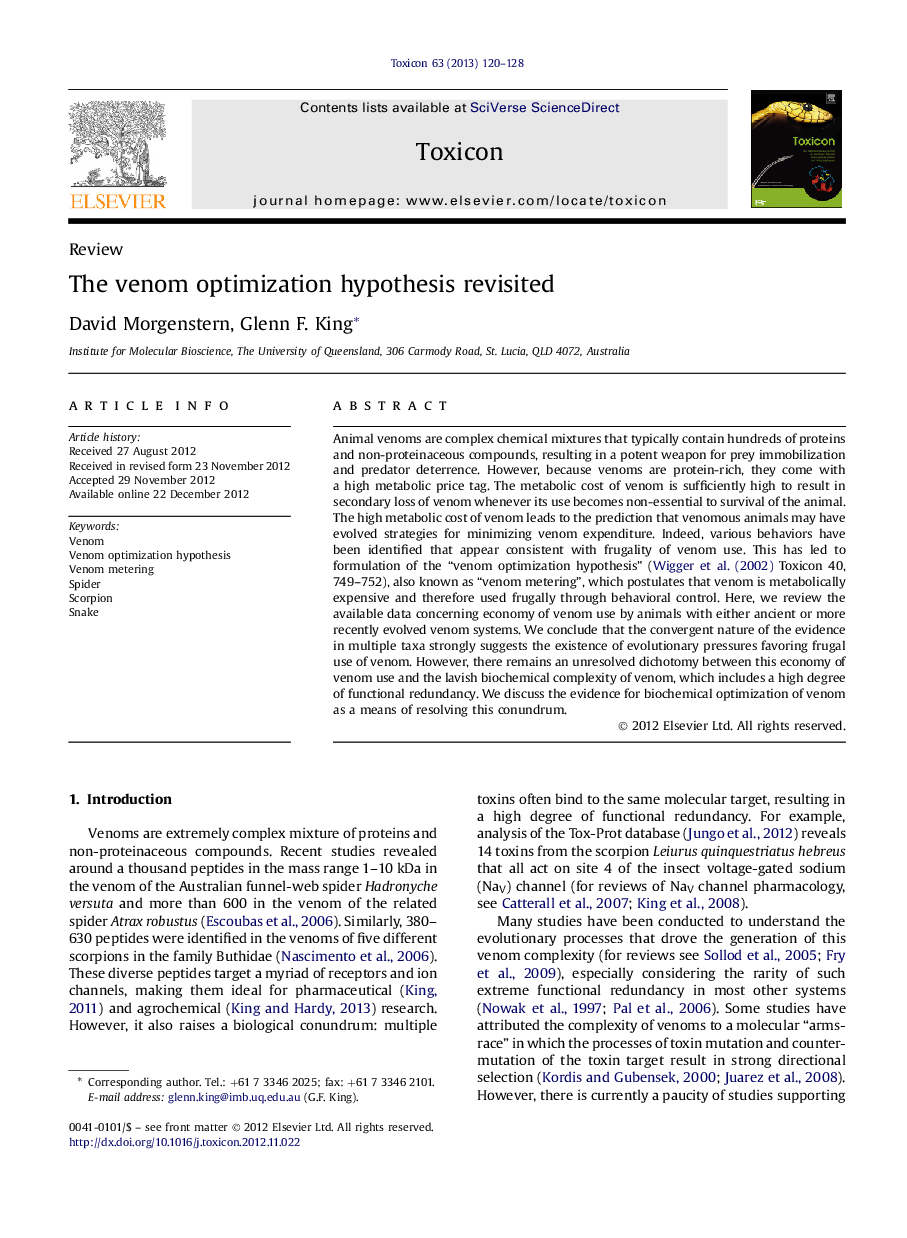| کد مقاله | کد نشریه | سال انتشار | مقاله انگلیسی | نسخه تمام متن |
|---|---|---|---|---|
| 8397964 | 1544172 | 2013 | 9 صفحه PDF | دانلود رایگان |
عنوان انگلیسی مقاله ISI
The venom optimization hypothesis revisited
ترجمه فارسی عنوان
فرضیه بهینه سازی زهر بازنگری شده است
دانلود مقاله + سفارش ترجمه
دانلود مقاله ISI انگلیسی
رایگان برای ایرانیان
کلمات کلیدی
زهر، فرضیه بهینه سازی زهر، اندازه گیری زهر، عنکبوت، عقرب مار،
موضوعات مرتبط
علوم زیستی و بیوفناوری
بیوشیمی، ژنتیک و زیست شناسی مولکولی
بیوشیمی، ژنتیک و زیست شناسی مولکولی (عمومی)
چکیده انگلیسی
Animal venoms are complex chemical mixtures that typically contain hundreds of proteins and non-proteinaceous compounds, resulting in a potent weapon for prey immobilization and predator deterrence. However, because venoms are protein-rich, they come with a high metabolic price tag. The metabolic cost of venom is sufficiently high to result in secondary loss of venom whenever its use becomes non-essential to survival of the animal. The high metabolic cost of venom leads to the prediction that venomous animals may have evolved strategies for minimizing venom expenditure. Indeed, various behaviors have been identified that appear consistent with frugality of venom use. This has led to formulation of the “venom optimization hypothesis” (Wigger et al. (2002) Toxicon 40, 749-752), also known as “venom metering”, which postulates that venom is metabolically expensive and therefore used frugally through behavioral control. Here, we review the available data concerning economy of venom use by animals with either ancient or more recently evolved venom systems. We conclude that the convergent nature of the evidence in multiple taxa strongly suggests the existence of evolutionary pressures favoring frugal use of venom. However, there remains an unresolved dichotomy between this economy of venom use and the lavish biochemical complexity of venom, which includes a high degree of functional redundancy. We discuss the evidence for biochemical optimization of venom as a means of resolving this conundrum.
ناشر
Database: Elsevier - ScienceDirect (ساینس دایرکت)
Journal: Toxicon - Volume 63, 1 March 2013, Pages 120-128
Journal: Toxicon - Volume 63, 1 March 2013, Pages 120-128
نویسندگان
David Morgenstern, Glenn F. King,
